Positioning of Unmanned Underwater Vehicle Based on Autonomous Tracking Buoy
Abstract
1. Introduction
1.1. Review of Previous Work
1.2. Novelty and Contributions of the Article
2. Spatial Location Geometric Model
3. System Design of Autonomous Tracking Buoy
3.1. Data Preprocession
3.2. Capturing UUV
3.3. Tracking UUV
| Algorithm 1: Target Acquisition and Tracking Algorithm. |
| Input: The distance between the three hydrophones on the buoy and the central acoustic beacon of the underwater vehicle: ρ1, ρ2, ρ3; |
| The depth of UUV:H; |
| Capture tolerance and tracking tolerance. |
| Output: The speed at which the buoy moves forward at the current moment; |
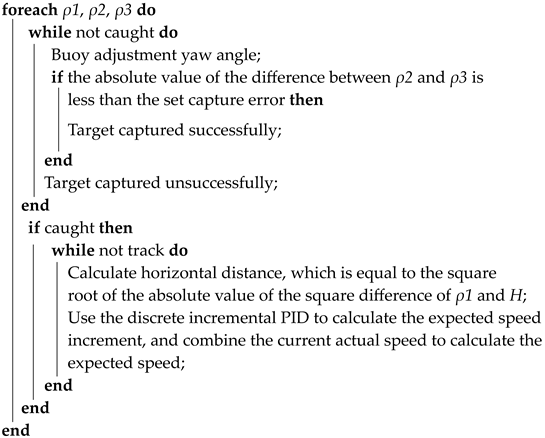 |
| Input the desired speed into the controller to calculate the PWM value of the thruster; |
3.4. Synchronizing UUV
4. Simulation Experiment and Sea Trial Experiment
4.1. The Simulation of Capturing UUV
4.2. The Simulation of Tracking UUV
4.3. Sea Trial Experiment of Buoy Synchronization Performance
5. Conclusions
Author Contributions
Funding
Institutional Review Board Statement
Informed Consent Statement
Data Availability Statement
Conflicts of Interest
References
- Hong, S.M.; Nam, K.S.; Ryu, J.D.; Lee, D.G.; Ha, K.N. Development and Field Test of Unmanned Marine Vehicle (USV/UUV) with cable. IEEE Access 2020, 8, 193347–193355. [Google Scholar] [CrossRef]
- Wu, Y.L.; Ta, X.X.; Xiao, R.C.; Wei, Y.G.; An, D.; Li, D.L. Survey of underwater robot positioning navigation. Appl. Ocean Res. 2019, 90, 101845. [Google Scholar] [CrossRef]
- D’Amato, E.; De Capua, C.; Filianoti, P.F.; Gurnari, L.; Nardi, V.A.; Notaro, I.; Scordamaglia, V. UKF-based fault detection and isolation algorithm for IMU sensors of Unmanned Underwater Vehicles. In Proceedings of the 2021 International Workshop on Metrology for the Sea, Learning to Measure Sea Health Parameters (MetroSea), Reggio Calabria, Italy, 4–6 October 2021; pp. 371–376. [Google Scholar]
- Qin, J.Y.; Li, M.; Li, D.R.; Zhong, J.G.; Yang, K. A Survey on Visual Navigation and Positioning for Autonomous UUVs. Remote Sens. 2022, 14, 3794. [Google Scholar] [CrossRef]
- Hunter, A.J.; Connors, W.A.; Dugelay, S. An Operational Concept for Correcting Navigation Drift During Sonar Surveys of the Seafloor. IEEE J. Ocean. Eng. 2018, 43, 913–926. [Google Scholar] [CrossRef]
- Neves, G.; Ruiz, M.; Fontinele, J.; Oliveira, L. Rotated object detection with forward-looking sonar in underwater applications. Expert Syst. Appl. 2019, 140, 112870. [Google Scholar] [CrossRef]
- Ali, U.; Muhammad, W.; Irshad, M.J.; Manzoor, S. Multi-sensor fusion for underwater robot self-localization using PC/BC-DIM neural network. Sens. Rev. 2021, 41, 449–457. [Google Scholar] [CrossRef]
- Rahman, S.; Quattrini Li, A.; Rekleitis, I. SVIn2: A multi-sensor fusion-based underwater SLAM system. Int. J. Robot. Res. 2022, 41, 1022–1042. [Google Scholar] [CrossRef]
- Shaukat, N.; Moinuddin, M.; Otero, P. Underwater vehicle positioning by correntropy-based fuzzy multi-sensor fusion. Sensors. 2021, 21, 6165. [Google Scholar] [CrossRef] [PubMed]
- Yan, J.; Guo, Z.W.; Yang, X.; Luo, X.Y.; Guan, X.P. Finite-time tracking control of autonomous underwater vehicle without velocity measurements. IEEE Trans. Syst. Man Cybern. Syst. 2021, 52, 6759–6773. [Google Scholar] [CrossRef]
- Dong, X.D.; Zhang, X.F.; Zhao, J.; Sun, M.; Wu, Q.H. Multi-maneuvering sources DOA tracking with improved interactive multi-model multi-bernoulli filter for acoustic vector sensor (AVS) array. IEEE T. Veh. Technol. 2021, 70, 7825–7838. [Google Scholar] [CrossRef]
- Cao, X.; Ren, L.; Sun, C.Y. Dynamic target tracking control of autonomous underwater vehicle based on trajectory prediction. IEEE T. Cybernetics. 2022, 53, 1968–1981. [Google Scholar] [CrossRef] [PubMed]
- Liu, S.Y.; Liu, Y.C.; Wang, N. Nonlinear disturbance observer-based backstepping finite-time sliding mode tracking control of underwater vehicles with system uncertainties and external disturbances. Nonlinear Dyn. 2017, 88, 465–476. [Google Scholar] [CrossRef]
- Shen, C.; Shi, Y.; Buckham, B. Trajectory tracking control of an autonomous underwater vehicle using Lyapunov-based model predictive control. IEEE T. Ind. Electron. 2017, 65, 5796–5805. [Google Scholar] [CrossRef]
- Ji, D.-H.; Choi, H.-S.; Vu, M.T.; Nguyen, N.-D.; Kim, S.-K. Navigation and Control of Underwater Tracked Vehicle Using Ultrashort Baseline and Ring Laser Gyro Sensors. Sens. Mater. 2019, 31, 1575–1587. [Google Scholar] [CrossRef]
- Krzysztof, N.; Aleksander, N. The Positioning Accuracy of BAUV Using Fusion of Data from USBL System and Movement Parameters Measurements. Sensors 2016, 16, 1279. [Google Scholar] [CrossRef] [PubMed]
- Nicholls, C.J.; Chakravarthy, K.; Tang, B.M.T.; Williams, B.; Bacic, M. On acoustically modulated jet shear layers and the Nyquist–Shannon sampling theorem. Phys. Fluids. 2022, 34, 115106. [Google Scholar] [CrossRef]
- Fahmy, A.A.; Abdel Ghany, A.M. Adaptive functional-based neuro-fuzzy PID incremental controller structure. Neural Comput. Applic. 2015, 26, 1423–1438. [Google Scholar] [CrossRef]
- Olivart i Llop, J.M.; Moreno-Salinas, D.; Sánchez, J. Full real-time positioning and attitude system based on GNSS-RTK technology. Sustainability. 2020, 12, 9796. [Google Scholar] [CrossRef]
- Wei, Y.L.; Zhu, D.Q.; Chu, Z.Z. Underwater dynamic target tracking of autonomous underwater vehicle based on MPC algorithm. In Proceedings of the 2018 IEEE 8th International Conference on Underwater System Technology: Theory and Applications (USYS), Wuhan, China, 1 August 2022; pp. 1968–1981. [Google Scholar]
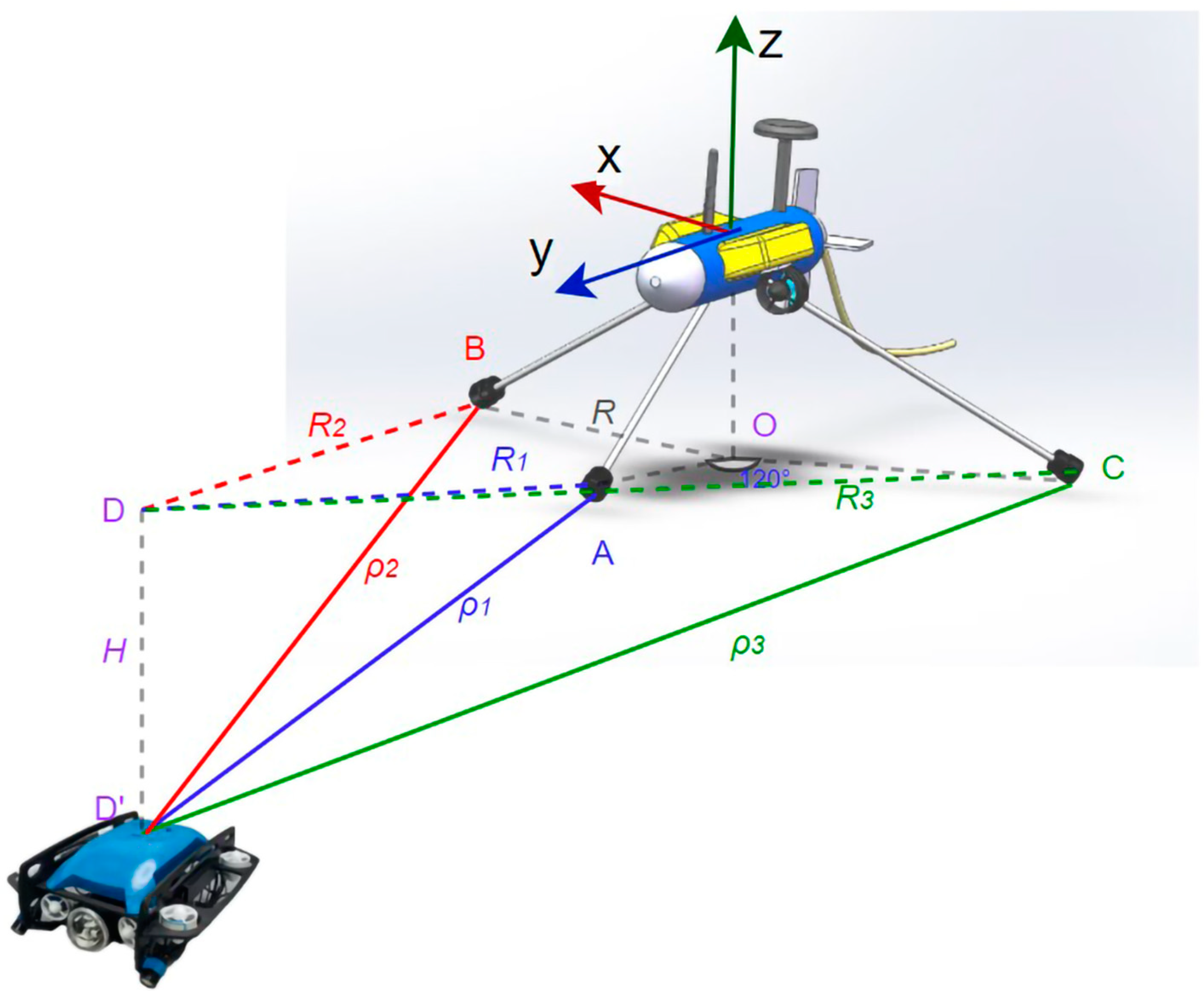
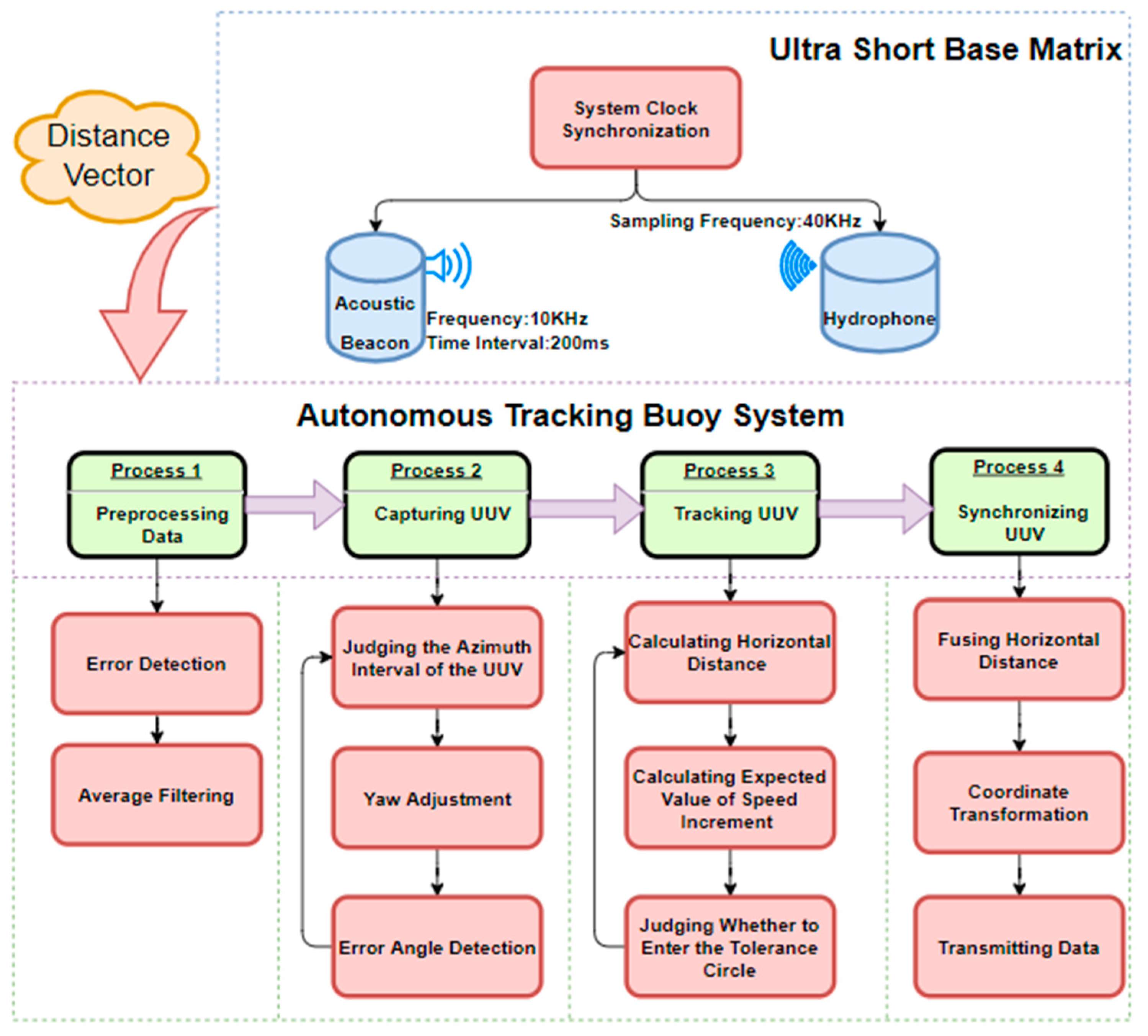
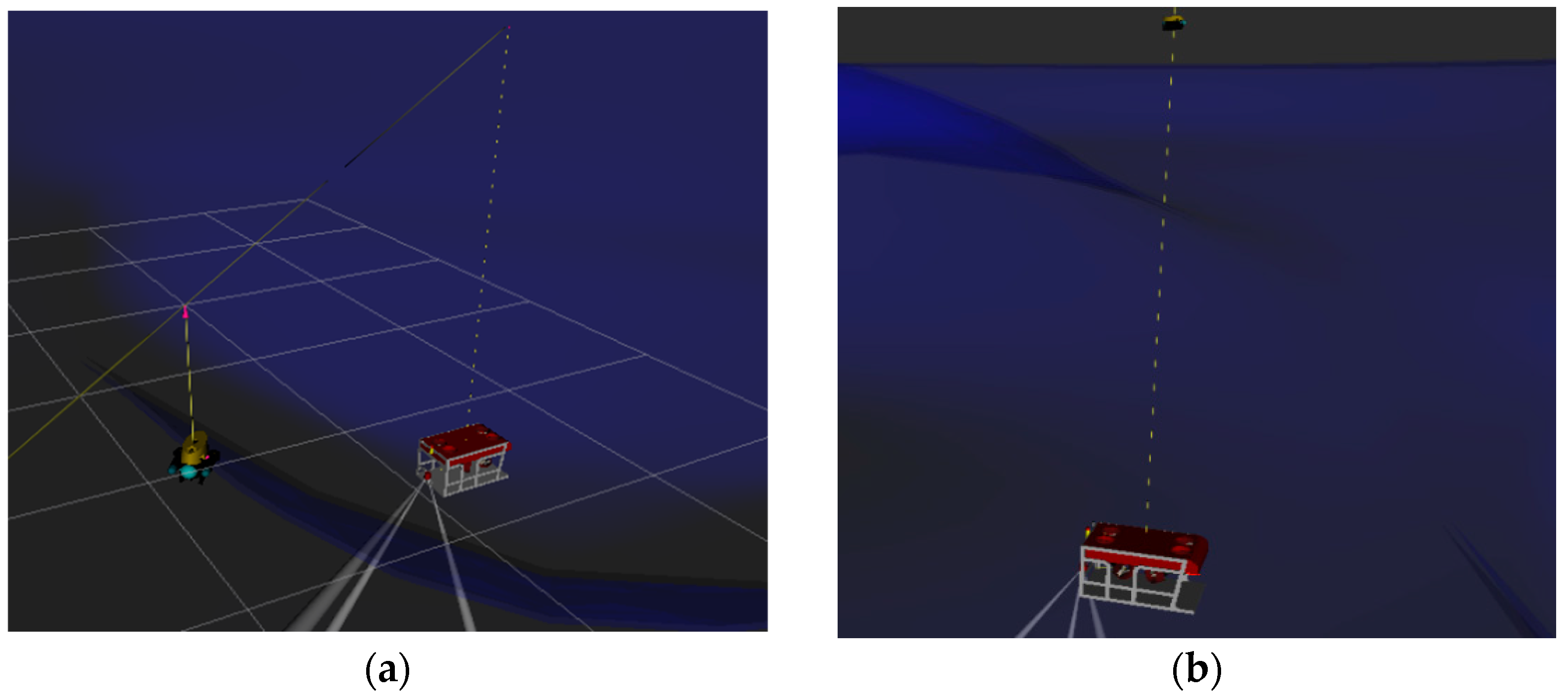
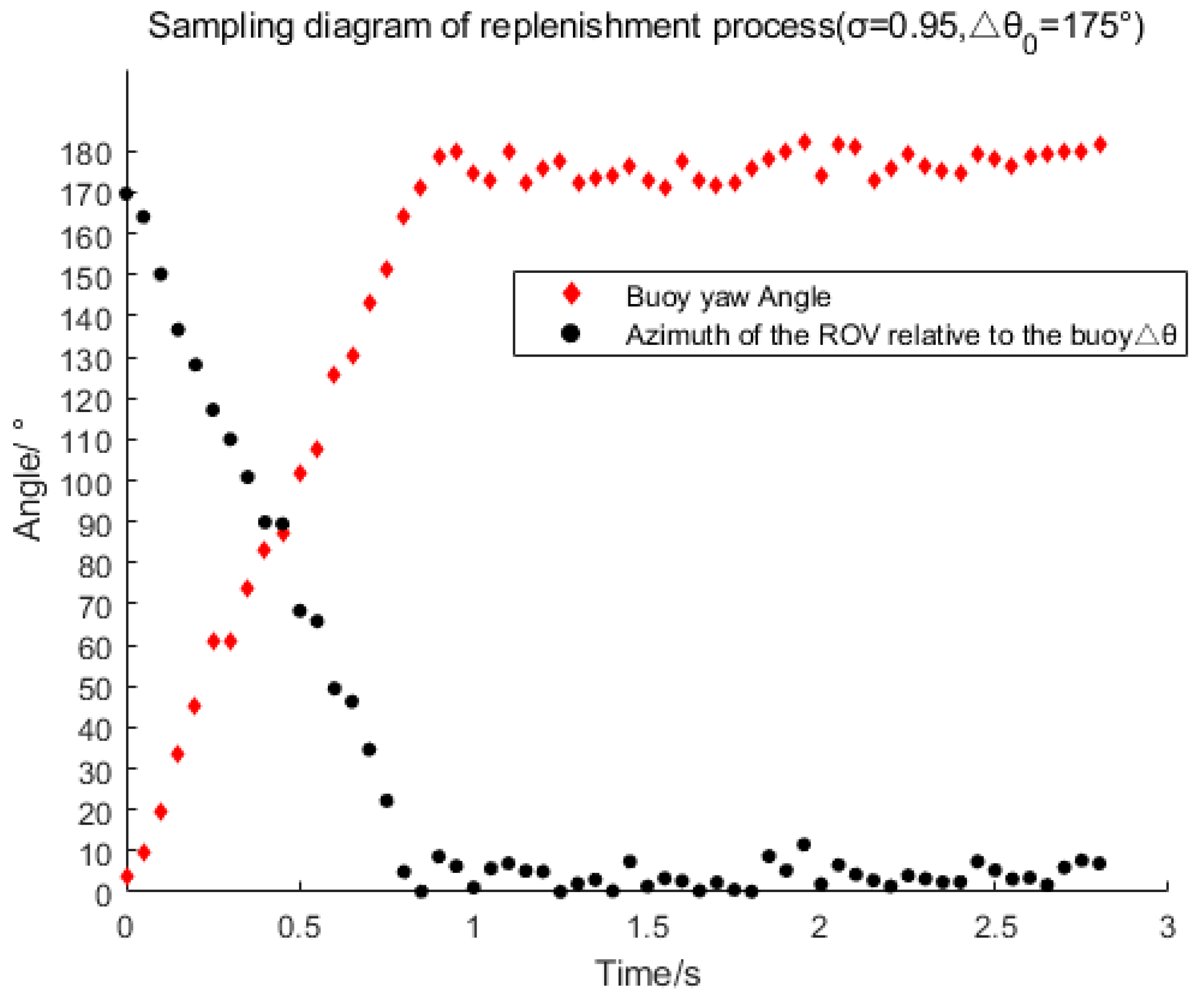

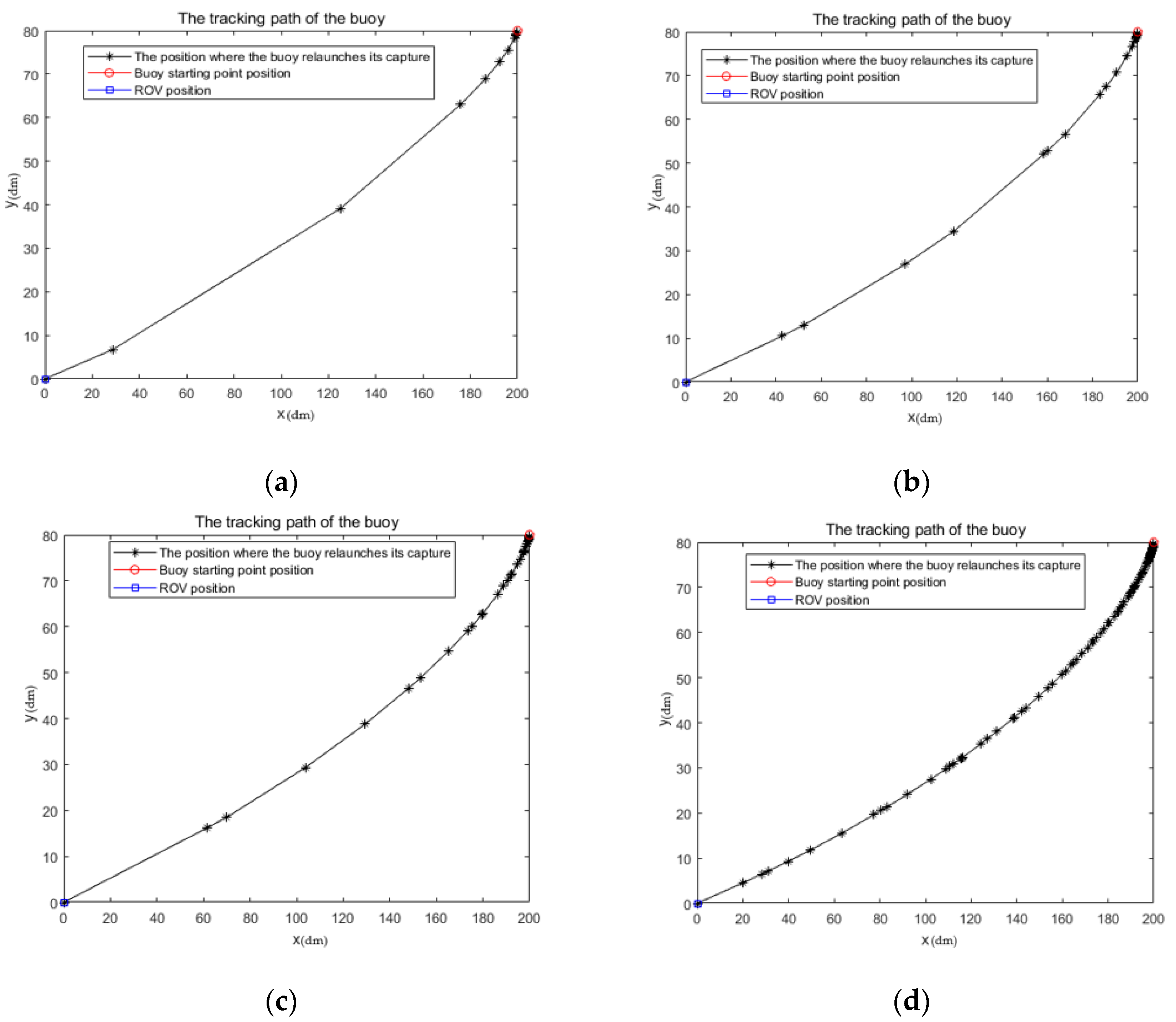
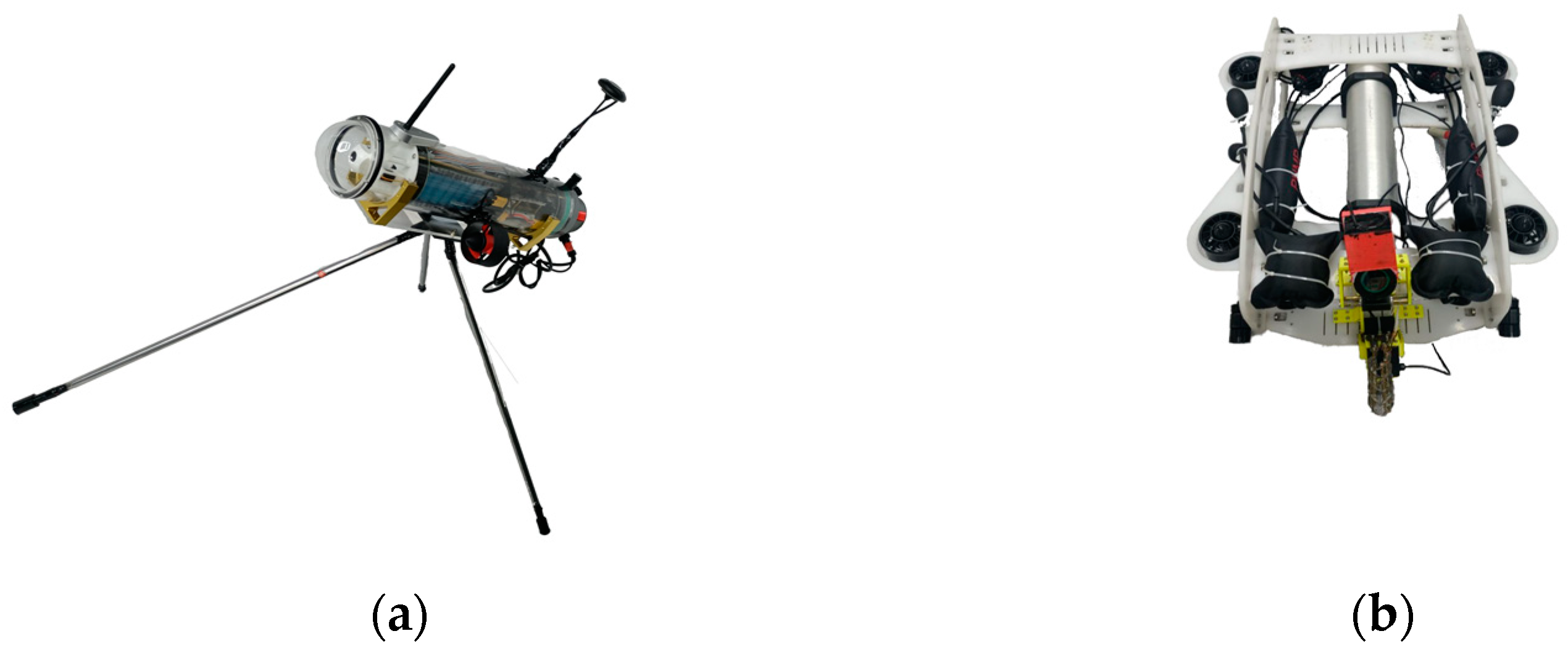
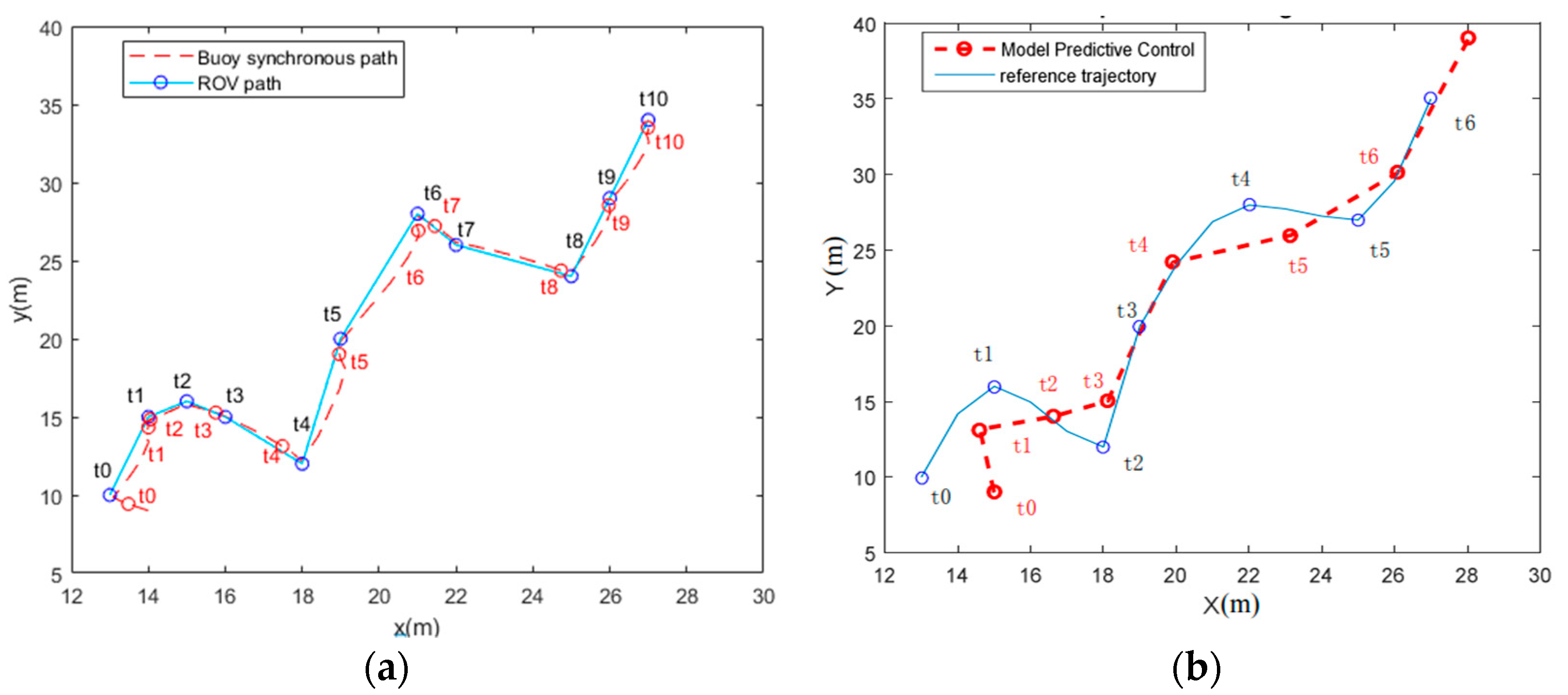
| Computer System | Ubuntu 18.04 |
|---|---|
| CPU | AMD Ryzen 7 PRO 4750U with Radeon Graphics |
| ROS version | melodic |
| Gazebo version | 9.0.0 |
| RVIZ version | 1.13.5 |
| Underwater simulation environment | UUV gazebo world lake |
| MINHA | Mean Value of Traced Path | Mean Value of Captures |
|---|---|---|
| 3° | 216.5905 | 13 |
| 5° | 217.3271 | 23 |
| 7° | 217.5285 | 37 |
| 9° | 218.0237 | 119 |
| MINHA | MSPPE | MRPE | ||
|---|---|---|---|---|
| Distance Error in X Direction (m) | Distance Error in Y Direction (m) | Distance Error of Straight Line (m) | ||
| 3° | 0.0516 | 0.0423 | 0.0667 | 1.565% |
| 5° | 0.0608 | 0.0493 | 0.0783 | 2.074% |
| 7° | 0.0634 | 0.0576 | 0.0857 | 2.275% |
| 9° | 0.0723 | 0.0611 | 0.0947 | 2.431% |
Disclaimer/Publisher’s Note: The statements, opinions and data contained in all publications are solely those of the individual author(s) and contributor(s) and not of MDPI and/or the editor(s). MDPI and/or the editor(s) disclaim responsibility for any injury to people or property resulting from any ideas, methods, instructions or products referred to in the content. |
© 2023 by the authors. Licensee MDPI, Basel, Switzerland. This article is an open access article distributed under the terms and conditions of the Creative Commons Attribution (CC BY) license (https://creativecommons.org/licenses/by/4.0/).
Share and Cite
Li, Y.; Ruan, R.; Zhou, Z.; Sun, A.; Luo, X. Positioning of Unmanned Underwater Vehicle Based on Autonomous Tracking Buoy. Sensors 2023, 23, 4398. https://doi.org/10.3390/s23094398
Li Y, Ruan R, Zhou Z, Sun A, Luo X. Positioning of Unmanned Underwater Vehicle Based on Autonomous Tracking Buoy. Sensors. 2023; 23(9):4398. https://doi.org/10.3390/s23094398
Chicago/Turabian StyleLi, Yuhan, Ruizhi Ruan, Zupeng Zhou, Anqing Sun, and Xiaonan Luo. 2023. "Positioning of Unmanned Underwater Vehicle Based on Autonomous Tracking Buoy" Sensors 23, no. 9: 4398. https://doi.org/10.3390/s23094398
APA StyleLi, Y., Ruan, R., Zhou, Z., Sun, A., & Luo, X. (2023). Positioning of Unmanned Underwater Vehicle Based on Autonomous Tracking Buoy. Sensors, 23(9), 4398. https://doi.org/10.3390/s23094398






